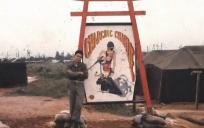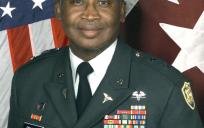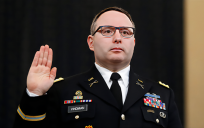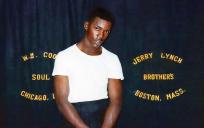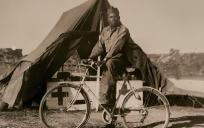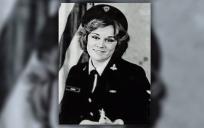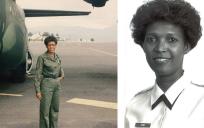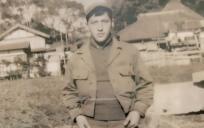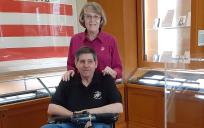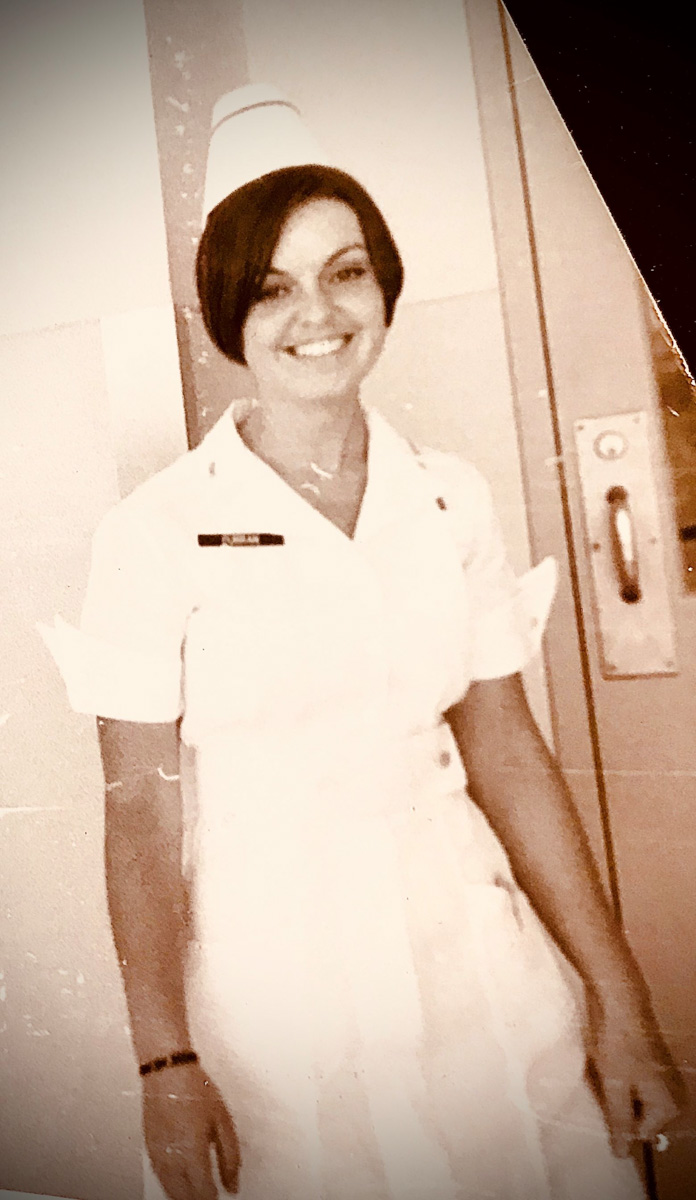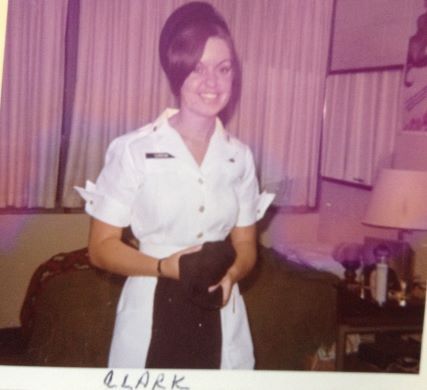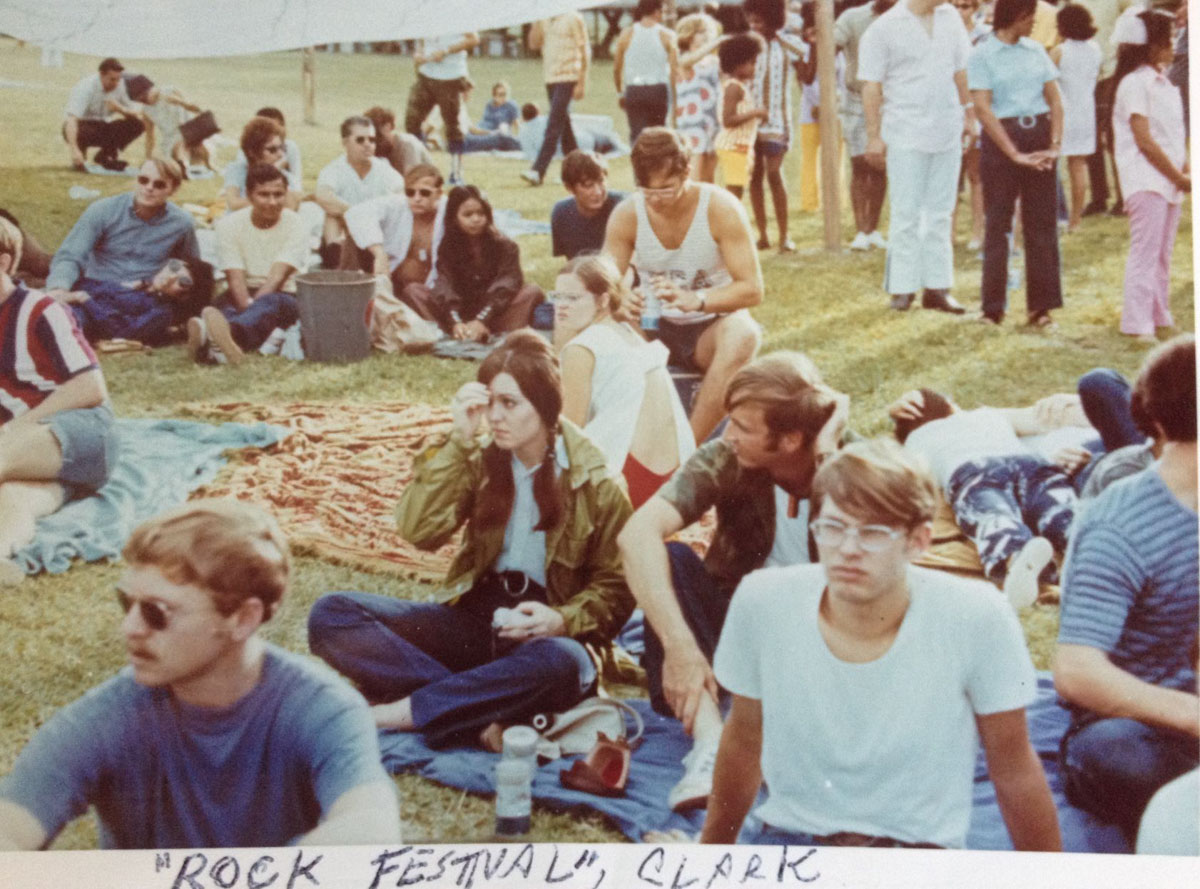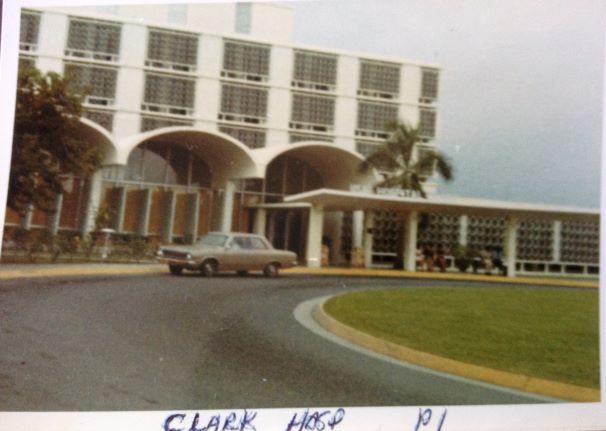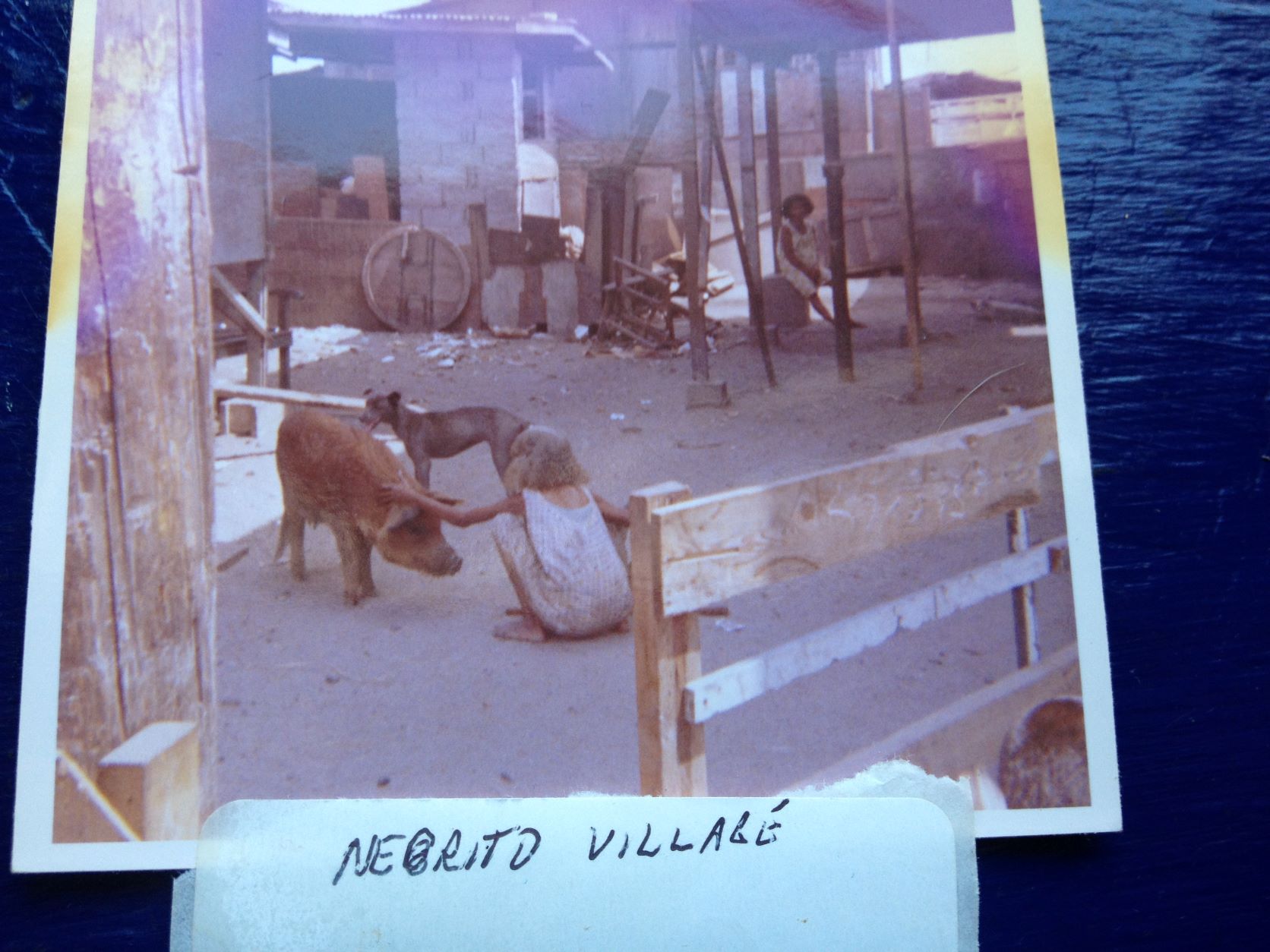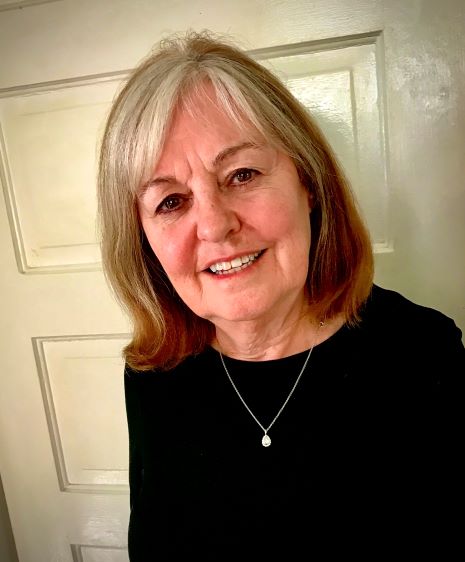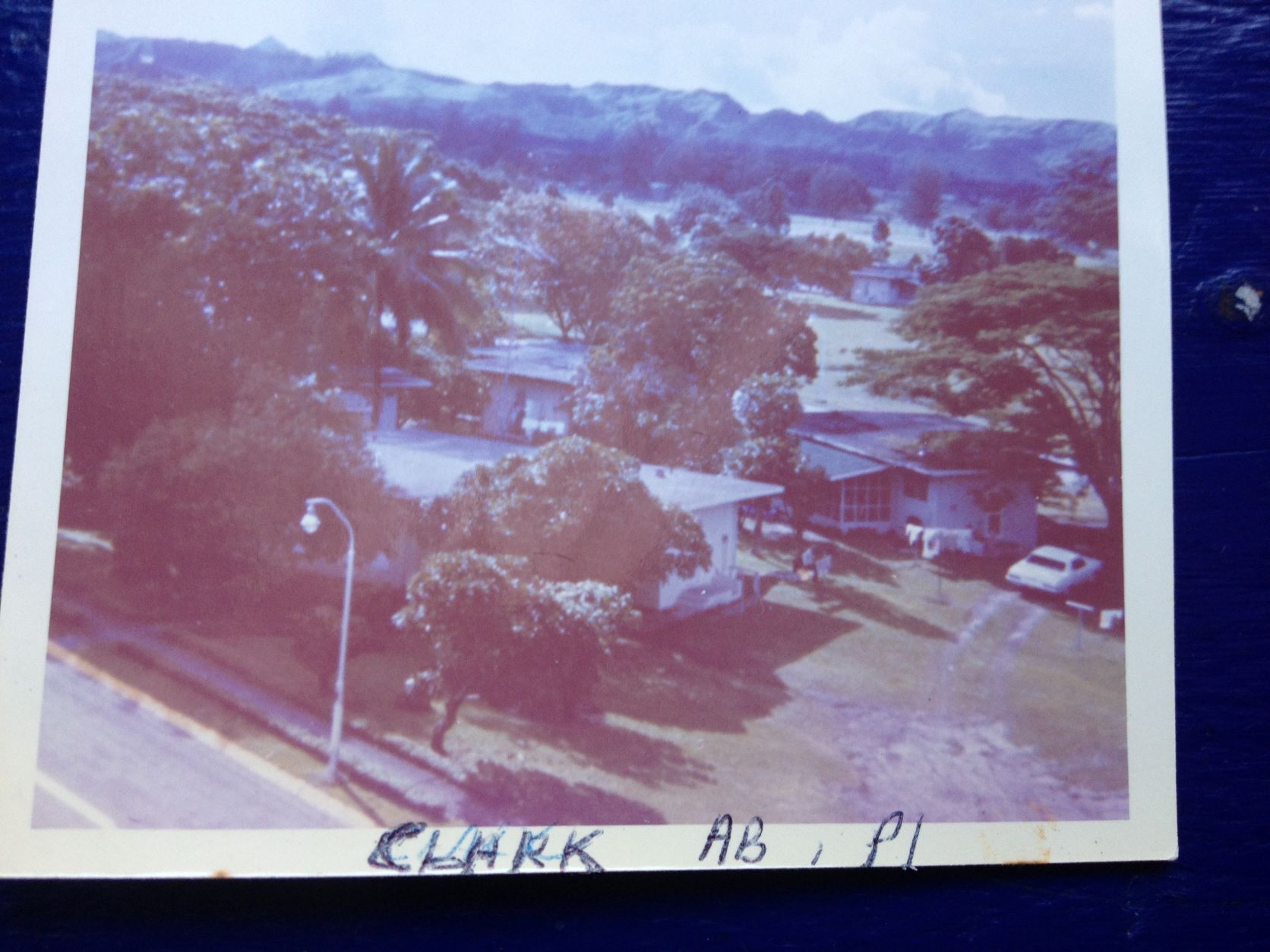Record date:
Mary K.C. Santine, Captain
She had always thought of herself on the fringe, an observer of politics and goings-on of her time. But willing or not we are all participants, and Mary Kaye (Katherine) Santine followed a career in the US Air Force Nursing Corps, stemming from a belief that she could help in a concrete, pragmatic way regardless of not being able to serve directly in the military as a soldier. Women have long functioned in and dominated support roles during warfare, and Santine was one of many women who wanted to make a difference in any way they could. Women could and should serve, she believes, especially given that women’s opportunities in the US Military have since greatly progressed over the years.
Mary was born in 1948 in Chicago to a middle-class family and led a peaceful childhood with her younger sister. Her father was an engineer, and her mother was a homemaker for most of it. She attended a Catholic grammar school and later Mother McAuley High School on the South Side of the city. Early on she began to distinguish herself as the first in her family to attend university, studying nursing at Northwestern University/Wesley Memorial Hospital. Almost immediately after graduating as a registered nurse, she decided to serve in the Airforce Nursing Corps in 1969, in part due to her father’s service in the Air Force during the Second World War. Basic training took place in Wichita Falls, Texas. While not featuring typical physical rigor of the standard training, it came with the difficulties of learning protocol in survival situations, staged medical emergencies, marching drills, and further academic material in the classroom. It mixed a unique blend of men and women from different professional and social backgrounds, something she would come to greatly appreciate in her career. After the six-week course, her first assignment was in Myrtle Beach, South Caroline at a small TAC (Tactical Air Command) base that trained fighter pilots. It was a stark contrast to her college days in a state-of-the-art university hospital, as the one on base had maybe thirty beds and few specialists on duty. But if anything, it quickly taught her to adapt to the many responsibilities of being a part of a small medical team that handled many different patients and ailments. It was less than a year after she began that she was transferred to the large hospital in the Clark Air Force Base on Luzon island, a part of the Philippines. It was one of the two hospitals located in southeast Asia where service-members that were or had become stable enough to endure travel from Vietnam. It was here she would encounter arguably the worst injuries, those scars of warfare. It was hard work, ten hour shifts most days of the week but made eminently bearable by the keen sense of camaraderie she felt from patients and fellow medical staff. They would treat US soldiers of all description, Philippine Nationals, and even occasionally one of the indigenous tribal people of the region as well as South Korean soldiers. She would stay in Philippines for a year and a half, before deciding to extend at the end of her time there. Because of this decision to further her career and stay in the service, she was able to make stops in places such as India, Thailand, Greece, and Spain on her way back to the United States (as she was “on orders”.) Mary greatly enjoyed this time in her life, it allowed her beautiful experiences of the world whilst feeling she was doing something constructive. When Mary did reach the US, she was deployed to Altus Air Force Base in Oklahoma. It was another small hospital in a predominantly rural area and came with its own variety of people and ailments. Each posting presented unique experiences; it was a profession that required a substantial amount of adaptability. While assigned here, she got an apartment off base and acquired a car to commute through the farm-dominated landscape to the base. Mary’s active duty was up in 1972, and was offered a regular commission, a rarer privilege to be given, but she had also been offered a proposal from her long-distance beau who had written her when she was posted overseas. She also aspired to continue education and her military career but that had been put on hold for active-duty service members by government mandate at that time. Feeling pulled in separate directions by the demands and allure of her career and the prospect of marriage, Mary eventually decided to leave active duty. She married her husband after moving to Philadelphia and got a job in civilian nursing at a university. She did, however, join the Air Force Reserves stationed at Maguire Air Force Base, New Jersey, outside of Philadelphia and began training to become a flight nurse. The training encompassed many general exercises centered around safety and protocol during flight emergencies, and maritime survival should the plane go down over the ocean, the latter involved a sea survival course in Florida. More specifically, she learned to handle patients in that specific setting, in terms of treatment, evacuation, and rescue. Training flights would typically take place around the Northeast US and Panama, but they would also transport US service-members from Germany should they be well enough to return home and undergo rehabilitation. Santine eventually earned her wings as a qualified flight nurse. She spent a year in the Reserves, and left service in 1974, to follow her husband as he attended graduate school in Ireland. Afterwards, Mary worked in many specialties in nursing, for the better part of thirty years. She and her husband have raised four children.
